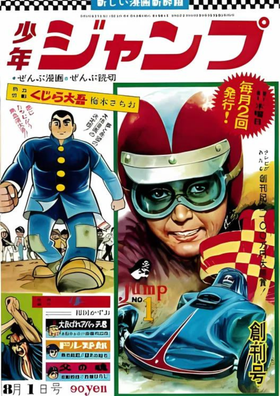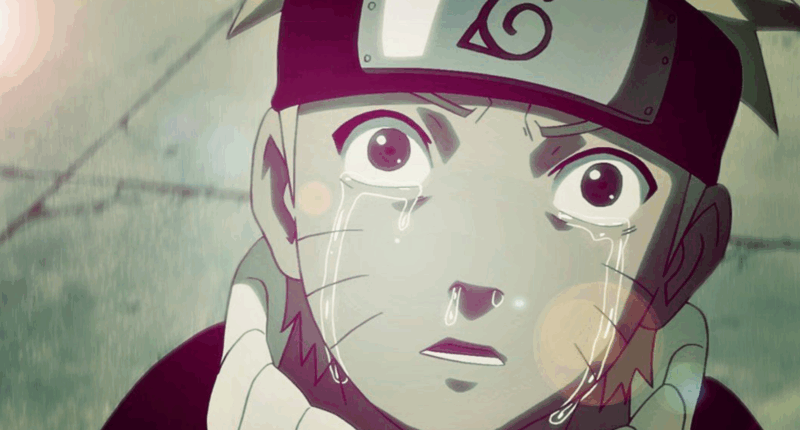The landscape of anime and manga, and which franchises run it, has changed considerably in the past several decades. Mainstays like the Shonen Big Three, comprised of One Piece, Naruto, and Bleach, and their home magazine, Weekly Shonen Jump, have seen their dominance diminish in the last decade. For manga and anime fans, this is for the best.
Shonen Jump has been far from the only game in town, but for many across the decades, the faces of anime were synonymous with the Shueisha giant. It’s not that the brand itself is failing; despite declining sales for the magazine, its digital presence has grown. But with the industry growing, fans have the chance to look past Shonen Jump.
Shonen Jump Is Not What It Used To Be
The days of success of Shonen Jump’s manga from the weekly imprint may not be wholly over, but they’re not the same as their glory days. With My Hero Academia, Jujutsu Kaisen, and Demon Slayer over, and heavy-hitters like JoJo’s Bizarre Adventure shifting to the seinen-focused Ultra Jump, the only old guard remaining are One Piece and Hunter x Hunter.
This isn’t to say the magazine isn’t publishing wonderful series. Blue Box, The Elusive Samurai, Kagurabachi and Ichi the Witch are stellar examples of the broad applications of shonen manga. But many of the biggest recent successes are from particularly recent years, with the persistent fear of cancellation for even great series that aren’t top-performers.
While cases like Demon Slayer have continued to be enormous successes for the brand, their largest effects on the industry will soon pass the buck to newcomers to try and exceed them. While all anime would hope to come close to box office victories and prestige animation Demon Slayer has, for Shonen Jump, meeting that goal is a necessity.
Anime adaptations are a major step for these manga to succeed, with their licensing being among the most lucrative opportunities, alongside print volume sales and merchandising. For Shonen Jump, alongside its Jump imprints like Jump+ or Jump Square, it’s often very predictable which series will get animated. Just two years of manga, in Kill Blue’s case, can warrant an anime.
This can sometimes lead to predictable announcements for more obscure Shonen Jump adaptations to keep the hype running while they prop up their biggest hits for their respective anime. The medium is growing more oversaturated by the year, and Shonen Jump’s formula was already prominent in the mix well before now. But this same formula is causing another problem.
Shonen Jump’s Weekly Model Is Crushing Its Top Talent
Weekly Shonen Jump is far from Shueisha’s only magazine available, with Jump Square being its monthly counterpart, Jump+ being a demographically-flexible digital extension, and Jump GIGA being its seasonal variant, to name a few. However, it is still the flagship from which its most prominent titles emerge.
Shonen Jump might be an unfamiliar place since creators like the late Akira Toriyama departed, but crucially, they haven’t changed for the better. Togashi’s infamous health issues have led to him having a drastically more irregular schedule for Hunter x Hunter. Bleach creator Tite Kubo faced the difficult decision of rushing the manga’s ending to prioritize his health.
But it’s more than the especially high-profile talent at Shonen Jump shouldering this pressure while finding compromise. Chainsaw Man’s Tatsuki Fujimoto lamented his time under Weekly Shonen Jump, with even Jump+ being much more manageable. Tight weekly deadlines are often crushing for Shonen Jump creators, with Yuki Tabata clearly suffering before his move to Jump GIGA.
Tight weekly deadlines are often crushing for Shonen Jump creators, with Yuki Tabata clearly suffering before his move to Jump GIGA.
The demand to create hits with the potential to run in perpetuity to generate multimedia franchises, all on a weekly basis, is a heavy burden for its creators. Some, while clearly improving since moving away from Weekly Shonen Jump, are still significantly hampered by health issues, such as D.Gray-man creator Katsura Hoshino, whose schedule is thus fairly inconsistent.
It’s a familiar narrative but one that bears repeating; Shonen Jump’s talent doesn’t necessarily leave Shueisha entirely, but often opts for imprints operating on a less demanding schedule. They have adoring fans, and while it can easily be argued that Shonen Jump helped put them on the map, the brand doesn’t have the same ubiquity it once did.
Non-Shonen Jump Anime Continues to Up the Ante
Popular anime’s landscape has changed considerably beyond the eye-opening success of Demon Slayer’s seasonal model. Such recent changes resulted in studios like Pierrot, prominently known for multiple Shonen Jump adaptations, to change their production model. But it’s also been a big period for popular non-Shonen Jump anime adaptations.
One incredible recent example is Frieren: Beyond Journey’s End. The series is adapted from a Weekly Shonen Sunday manga, published by Shogakukan, and it’s now comfortably sitting atop the MyAnimeList all-time rankings. Before even that, another non-Shueisha adaptation, Fullmetal Alchemist: Brotherhood, held the throne.
When one considers that Shogakukan is itself part of the same publishing group as Shueisha and Hakusensha, another adaptation further removed comes to mind, the wildly successful The Apothecary Diaries. On top of being an exceptional anime out of 2023, the series is based on a light novel, with its successful seinen manga adaptation published by Square Enix.
Other non-Shonen Jump adaptations are continuously emerging as well, such as Bones Film’s adaptation of Kodansha’s Gachiakuta, very much a rival to Shonen Jump’s properties, is crushing My Hero Academia despite the latter being in its final season. Shonen’s genre is still rich for adaptations, but Kodansha doesn’t need to rely solely on Attack on Titan to disrupt it anymore.
But perhaps the most compelling outsider is the success of Solo Leveling, a stellar showing of Japanese animation adapting a genre-defining Korean manhwa and webnovel published by Kakao. In terms of fans in the West, this series perhaps carries with it more hype than almost any other anime, certainly at least on Crunchyroll.
Shonen Jump Is Competing in a Much More Saturated Market Now
When One Piece eventually bows out, unless Eiichiro Oda keeps defying the odds and keeps the series going for another several years, Shonen Jump’s era of greatness will be unequivocally over. Hunter x Hunter has its future planned, it’s mostly a matter of how much time Togashi needs to complete the final batches of chapters.
While other properties exist and thrive under Shonen Jump’s various imprints, Weekly Shonen Jump remains the flagship until further notice. Even with encouraging successes for Kagurabachi and Ichi the Witch, it’s difficult to imagine the magazine having quite as many worldwide smash hits, at least for a while. But this is definitely a good thing.
Even with encouraging successes for Kagurabachi and Ichi the Witch, it’s difficult to imagine the magazine having quite as many worldwide smash hits, at least for a while.
For better or for worse, Shonen Jump’s various brands have helped shaped the mainstream image of anime and manga for a worldwide audience. Its properties regularly rank among the top-grossing media franchises on the planet, grossing up or even exceeding $10 billion each. Other popular anime now have a fighting chance in a landscape craving the next big thing.
Shonen Jump is just part of that landscape now, and will have to win over viewers in a more saturated market for its anime adaptations. But importantly, it’s a matter of whether it can change positively to foster future successes that aren’t at the expense of the well-being of its talent.

- Created by
-
Takashi Isono, Kazuhiko Torishima
- First Film
-
Dragon Ball: Curse of the Blood Rubies













